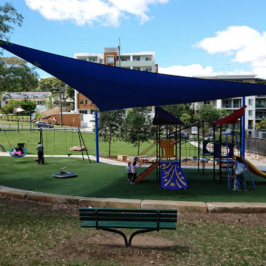Cooking at home is ideal when you have young children, but first it is essential to ensure that the kitchen has been properly child-proofed. Here’s how to accomplish that:
Child-Proof the Electrical Outlets
It would be disastrous if little fingers were to find their way into an electrical outlet in your kitchen. You can prevent this by plugging all electrical outlets that are within easy reach for your children. The ideal thing to use is tamper-proof removable outlet caps that you can easily pull out, but your child can’t.
Be aware that plastic plugs are not always one-hundred-percent foolproof. In a home that has faulty wiring, they can catch on fire. If there is any doubt whatsoever that this could be a problem, it is advisable to have a qualified sparky inspect your outlets prior to conducting your child-proofing.
Make Your Appliances Safer for Kids
Be sure to talk to your children about the stove and make them aware that it is hot and not to be touched. Many stoves have child-proof covers or stove guards available. These are ideal for preventing tiny burned fingers. Avoid opening your oven door when your child is nearby.
Unplug all small kitchen appliances like toasters, food processors, coffee makers and coffee grinders when you’re not actually using them. Store them out of reach of your little ones.
Child-Proof Your Kitchen Sink
If you have a standard stainless steel kitchen sink, you might be tempted to think it isn’t much of a danger to your toddler. However, there are a few considerations you shouldn’t overlook.
Some kids are fascinated with water. They love to splash it, drizzle it and play in it. Water on its own isn’t a massive concern, but there are some possible problems that can arise from unsupervised water play in the kitchen sink. For starters, it is possible for your children to accidentally scald themselves on hot tap water. One solution to that: turn down the temperature on your water heater so that the temperature becomes much milder.
It is also possible that drips and puddles could accidentally escape the sink, creating a slipping hazard in the kitchen.
If there is any possibility that your child could wreak havoc by turning on the faucet, you might want to consider getting a sink faucet lock for your kitchen sink.
Lock the Cabinets Underneath the Kitchen Sink
For most parents, the cabinet area underneath the kitchen poses a much more significant concern than the kitchen sink itself does. Under the sink, you might have all manner of cleaners and abrasive substances stored. Your little ones could accidentally scrape their skin with the scrubbers or eat the dishwashing soap. These scenarios absolutely must be avoided, and the easiest way to accomplish this is simply locking the cabinet and keeping children out of it.
Keep all plastic bags out of reach, as children can accidentally choke on them or suffocate themselves with them.
Garbage Disposal Safety
Your garbage disposal also presents possible hazards for your little ones. Be sure to install a switch protector to ensure this only gets turned on when you want it to. A drain cover is a good investment for protecting little fingers and assorted objects from falling victim to the garbage disposal’s clutches.
These are some of the most important things you can do to prevent childrens’ injuries in your kitchen. Taking these steps can help to ensure that your child will stay safe while you’re cooking at home. Beyond these things, it’s also important to remain watchful and keep alert to what your child is doing so you can discourage dangerous behaviours that could cause harm. Communication is another important key, as your child doesn’t necessarily have the life experience necessary to understand what hazardous behaviour looks like. Gentle warnings can go a long way towards helping your child to understand what behaviours should be avoided in the kitchen.
THIS IS A SPONSORED POST














